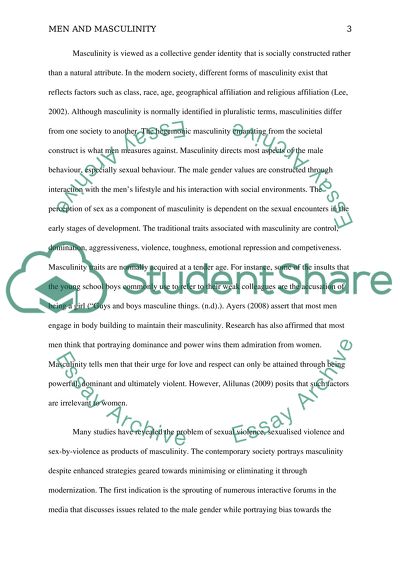Cite this document
(“Men and masculinity Essay Example | Topics and Well Written Essays - 1500 words”, n.d.)
Men and masculinity Essay Example | Topics and Well Written Essays - 1500 words. Retrieved from https://studentshare.org/journalism-communication/1465143-men-and-masculinity
Men and masculinity Essay Example | Topics and Well Written Essays - 1500 words. Retrieved from https://studentshare.org/journalism-communication/1465143-men-and-masculinity
(Men and Masculinity Essay Example | Topics and Well Written Essays - 1500 Words)
Men and Masculinity Essay Example | Topics and Well Written Essays - 1500 Words. https://studentshare.org/journalism-communication/1465143-men-and-masculinity.
Men and Masculinity Essay Example | Topics and Well Written Essays - 1500 Words. https://studentshare.org/journalism-communication/1465143-men-and-masculinity.
“Men and Masculinity Essay Example | Topics and Well Written Essays - 1500 Words”, n.d. https://studentshare.org/journalism-communication/1465143-men-and-masculinity.


